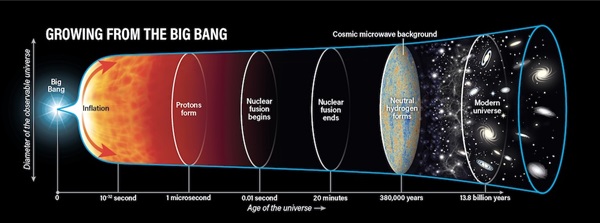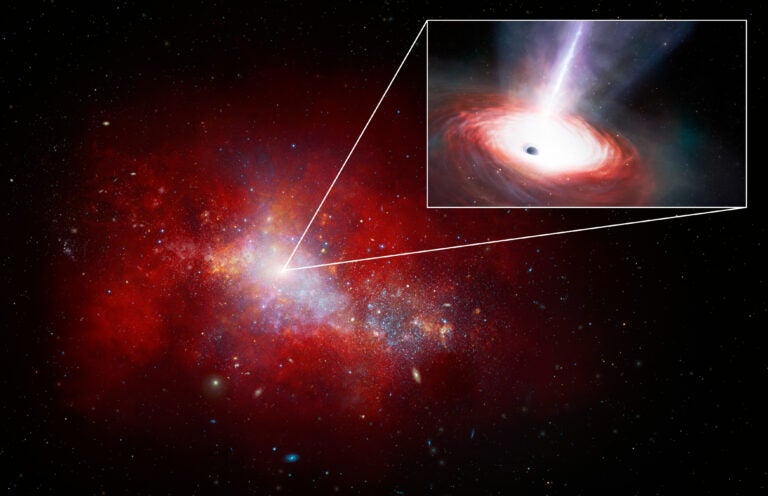Our universe is and has been expanding throughout its history, and this means that it was hotter and denser in the past than it is today. Any given piece of space was smaller in the past than it is now. The fact that nothing can travel faster than the speed of light limits how much of our universe we can observe; the currently observable part of our universe is about 46.5 billion light-years in radius.
When the first stars were forming in our universe — a couple of hundred million years after the Big Bang — the radius of what is now our observable universe was about 20 times smaller than it is today. When the first atoms were forming — a few hundred thousand years after the Big Bang — it was about 1,000 times smaller. The particle accelerator known as the Large Hadron Collider near Geneva, Switzerland, enables physicists to study the conditions that we think were in place when our universe was only a trillionth of a second old. At that time, the region of space that is now our observable universe was only a couple of hundred million kilometers in extent.
If we extrapolate even further back in time, we can imagine a hypothetical state that may have been present about 10–43 seconds after the Big Bang. The laws of physics as we currently understand them — including general relativity and quantum mechanics — don’t allow us to extrapolate any further back than this so-called Planck time. (Read more on this cosmic era in Astronomy’s April 2022 issue.) At the Planck time, the region that is now our observable universe would have been only a fraction of a millimeter in diameter, or smaller than the size of a pinhead.
You might think that at such incredible densities, the matter and energy in our early universe would have collapsed, resulting in the formation of black holes. Black holes form, however, only when the matter and energy is distributed unevenly. In the early universe, the energy was distributed in an almost perfectly uniform way throughout space. The homogeneity of the early universe would have prevented any — or at the very least, many — black holes from forming.










